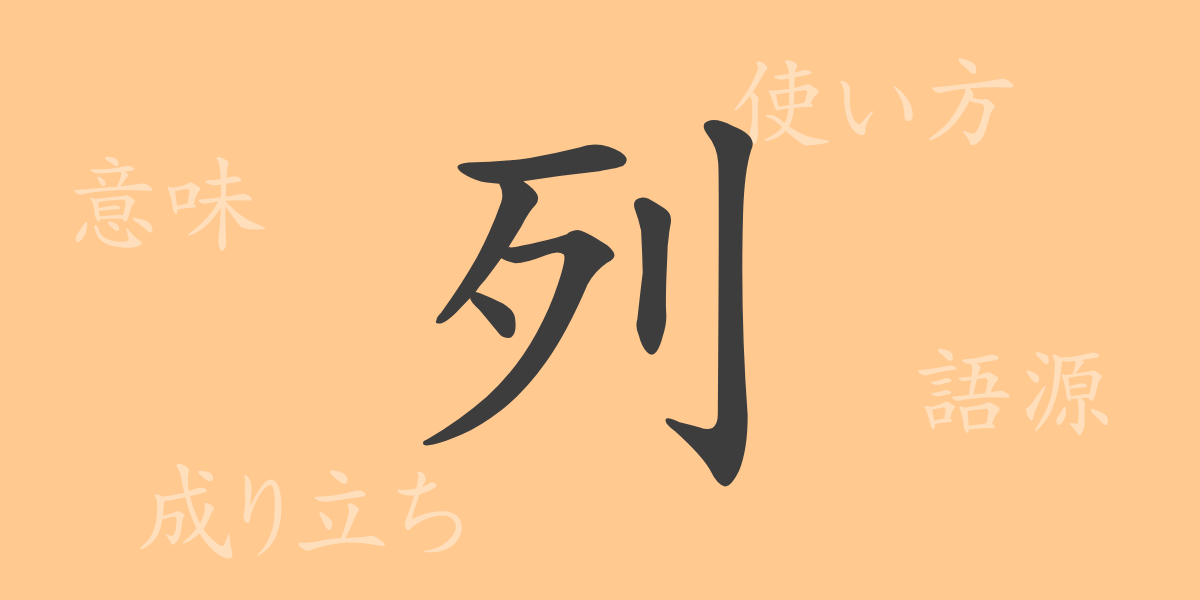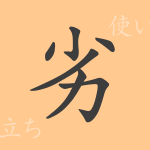The beauty of the Japanese language is reflected in its complex and rich characters. One of the commonly used kanji (漢字, kanji) is “列” (れつ, retsu), a character frequently encountered in daily life. In this article, we will delve into the origins of “列” (れつ, retsu), its meanings, usages, readings, and the idioms and phrases that incorporate “列” (れつ, retsu). Let’s explore the world of “列” (れつ, retsu) together, while appreciating the depth of the Japanese language.
Origins of 列 (れつ, retsu)
The kanji (漢字, kanji) “列” (れつ, retsu) originated in ancient China. Its shape depicts people lined up in a row holding weapons. This character, reminiscent of orderly formations on the battlefield, is said to symbolize order and continuity. Over time, its shape gradually evolved into the present-day “列” (れつ, retsu).
Meanings and Usages of 列 (れつ, retsu)
“列” (れつ, retsu) means “to line up” or “to form a row.” It also refers to things that follow a certain order or sequence. For example, “列車” (れっしゃ, ressha) refers to a train with carriages lined up in a row, and “待ち列” (まちれつ, machiretsu) describes a line of people waiting their turn. In Japanese, the character “列” (れつ, retsu) is used to represent these situations.
Readings, Stroke Count, and Radical of 列 (れつ, retsu)
Let’s take a look at the basic information about the kanji (漢字, kanji) “列” (れつ, retsu).
- Readings: On’yomi (音読み, onyomi) is “レツ” (れつ, retsu), and Kun’yomi (訓読み, kunyomi) is “つらなる” (つらなる, tsuranaru) and “つらねる” (つらねる, tsuraneru).
- Stroke Count: It has a total of 6 strokes.
- Radical: The radical of “列” (れつ, retsu) is “刂” (りっとう, rittou).
Idioms, Phrases, and Proverbs Using 列 (れつ, retsu)
There are many idioms, phrases, and proverbs in Japanese that include “列” (れつ, retsu). Here are some examples:
- 「列車」 (れっしゃ, ressha) – A train with carriages lined up in a row.
- 「列島」 (れっとう, rettou) – An archipelago, such as the Japanese archipelago, that forms a long row of islands.
- 「一列に並ぶ」 (いちれつにならぶ, ichiretsu ni narabu) – To line up in a straight row.
- 「鶴の一声で列をなす」 (つるのひとこえでれつをなす, tsuru no hitokoe de retsu o nasu) – Order is established by the authoritative word of a respected person.
Summary of 列 (れつ, retsu)
The commonly used kanji (漢字, kanji) “列” (れつ, retsu) symbolizes order and continuity, as its shape suggests. This character plays a crucial role in various contexts within the Japanese language. Through this exploration, we have gained an understanding of the depth of meaning and richness of usage that “列” (れつ, retsu) holds in Japanese. When you encounter “列” (れつ, retsu) in daily communication, remember the history and significance behind it.

























